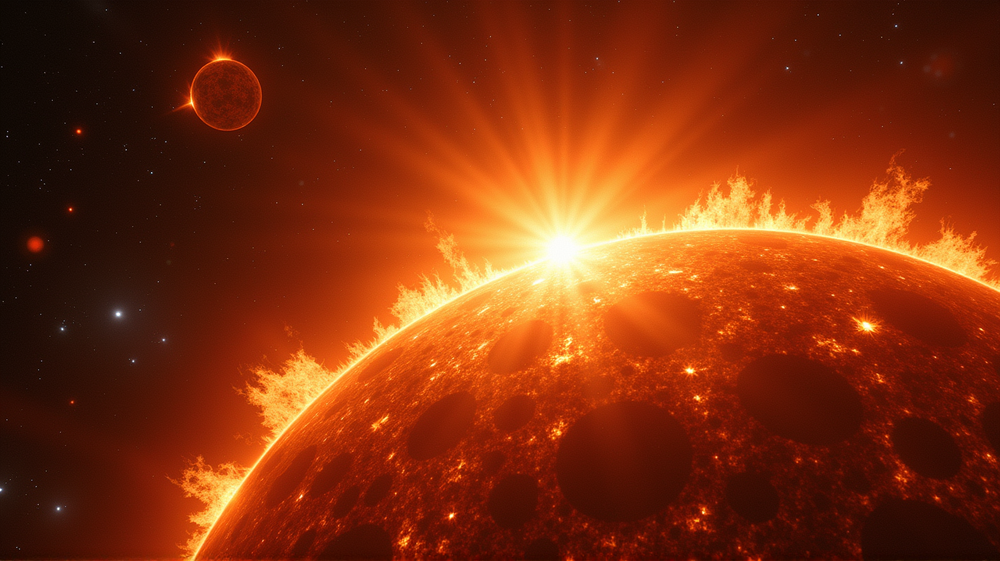The Journey of AR4246: A Prolific Flare Producer
In recent days, sunspot region AR4246 has captivated scientists and space weather enthusiasts alike. It stands out as a powerful source of M and C-class solar flares, a regular companion to coronal mass ejections (CMEs) that might reach Earth. With AR4246 approaching the sun’s western horizon, we’re witnessing its final visible act before it disappears over the solar limb.
Flare Highlights: A Symphony of Solar Eruptions
During a 24-hour window, AR4246 stunned observers by unleashing 20 solar flares. These included four M-class gentle giants, which delivered radio blackouts over the Pacific and Atlantic Oceans. Not to mention the numerous C-class flares, creating a solar crescendo as the sunspots began their journey out of view.
Anticipating the AR4246 Departure
Despite expectations, the CMEs linked to AR4246’s activity failed to induce a G2 geomagnetic storm. Their gentler impact might yet cause a G1 storm, with associated soft auroras at higher latitudes. Still, one can’t predict with certainty if AR4246 might surprise with an X flare in its swan song. Stay attuned for updates.
Solar Wind and Earth’s Magnetic Waltz
Solar winds have been gradually waning, dipping from highs of 440 km/s to a calmer 379 km/s. Coupled with an interplanetary magnetic field that tantalizes moderate highs, Earth’s geomagnetic environment skates on the edge of gentle unsettlement (Kp 0-3). Should any remaining puff of wind from the departing coronal hole hit Earth, light auroras may dance across the northern skies.
Future Looks from the Sun-Earth Connection
As AR4246 bids adieu, AR4248 emerges as a new contender. Its unique magnetic choreography raises prospects for continued solar activity. Forecasting retains cautious optimism for ongoing moderate outputs, with a slender 15% chance of rare X-class flares. Our sun indeed has stories left to unfold over the horizon.
The Aurora Watch Continues
Prospecting for auroras continues against the backdrop of quieter geomagnetic conduct bolstered by potential CME tailwinds. Hopes linger for captivating auroral displays over the poles. Reports and community photographs align to depict the celestial ballet that unfolds when the sun flexes its energetic muscles.
Conclusion and Next Steps
The sun’s complex and vibrant dance shapes cosmic patterns as regions like AR4246 paint our skies in luminous hues. Understanding these solar activities equips us to forecast and appreciate Earth’s dynamic place within the solar system’s grandeur. According to EarthSky, ongoing observations paint a compelling and ever-changing narrative, awaiting future chapters that the cosmos has in store.












